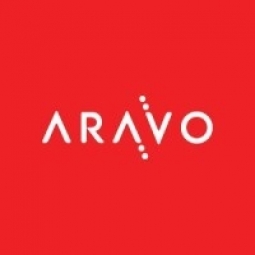技术
- 平台即服务 (PaaS) - 应用开发平台
- 传感器 - 相机/视频系统
适用行业
- 建筑物
- 建筑与基础设施
适用功能
- 维护
- 产品研发
用例
- 实时定位系统 (RTLS)
- 时间敏感网络
服务
- 云规划/设计/实施服务
关于客户
Kaltura 是一家为 1,000 多家客户提供直播、实时和点播视频 SaaS 解决方案的公司,这些客户在家庭、工作和学校吸引了数百万观众。其虚拟活动产品在 COVID-19 大流行期间迅速流行。 Kaltura 的使命是为任何组织提供任何视频体验,部署广泛的视频解决方案来帮助客户教学、学习、交流、协作和娱乐。该公司的数据工程团队支持公司的所有数据需求,最近从主要支持公司的云电视部门转变为作为平台部门的一部分为整个公司提供服务。
挑战
Kaltura 是一家提供直播、实时和点播视频 SaaS 解决方案的公司,面临着构建近乎实时的事件管道的挑战。数据团队的任务是根据用户设备发送的流事件创建新的数据产品。该管道需要捕获事件并将其直接写入数据湖,检测异常并通知利益相关者事件数量激增。数据工程团队最近从主要支持公司的云电视部门转变为为整个公司提供服务,他们的任务还包括用新的数据湖平台替换旧基础设施。
解决方案
Kaltura 决定部署 Databricks Lakehouse 平台和 dbt 来取代其遗留架构。该公司推出了概念验证,并受到其成功的鼓舞,决定合并 dbt 来帮助扩展其快速增长、混乱的数据。借助 Databricks 和 dbt,Kaltura 取代了其旧数据架构,与 Databricks 一起运行 dbt 来编排其最复杂的工作流程。这导致了更快的处理速度,并且更少需要人工参与。向 dbt 的过渡还迫使 Kaltura 转向 SQL,团队认为此举是值得的。随着 Kaltura 的计算需求不断增加,数据团队可以轻松扩展 Databricks 中的资源。
运营影响
数量效益

Case Study missing?
Start adding your own!
Register with your work email and create a new case study profile for your business.
相关案例.

Case Study
Energy Saving & Power Monitoring System
Recently a university in Taiwan was experiencing dramatic power usage increases due to its growing number of campus buildings and students. Aiming to analyze their power consumption and increase their power efficiency across 52 buildings, the university wanted to build a power management system utilizing web-based hardware and software. With these goals in mind, they contacted Advantech to help them develop their system and provide them with the means to save energy in the years to come.

Case Study
IoT System for Tunnel Construction
The Zenitaka Corporation ('Zenitaka') has two major business areas: its architectural business focuses on structures such as government buildings, office buildings, and commercial facilities, while its civil engineering business is targeted at structures such as tunnels, bridges and dams. Within these areas, there presented two issues that have always persisted in regard to the construction of mountain tunnels. These issues are 'improving safety" and "reducing energy consumption". Mountain tunnels construction requires a massive amount of electricity. This is because there are many kinds of electrical equipment being used day and night, including construction machinery, construction lighting, and ventilating fan. Despite this, the amount of power consumption is generally not tightly managed. In many cases, the exact amount of power consumption is only ascertained when the bill from the power company becomes available. Sometimes, corporations install demand-monitoring equipment to help curb the maximum power demanded. However, even in these cases, the devices only allow the total volume of power consumption to be ascertained, or they may issue warnings to prevent the contracted volume of power from being exceeded. In order to tackle the issue of reducing power consumption, it was first necessary to obtain an accurate breakdown of how much power was being used in each particular area. In other words, we needed to be able to visualize the amount of power being consumed. Safety, was also not being managed very rigorously. Even now, tunnel construction sites often use a 'name label' system for managing entry into the work site. Specifically, red labels with white reverse sides that bear the workers' names on both sides are displayed at the tunnel work site entrance. The workers themselves then flip the name label to the appropriate side when entering or exiting from the work site to indicate whether or not they are working inside the tunnel at any given time. If a worker forgets to flip his or her name label when entering or exiting from the tunnel, management cannot be performed effectively. In order to tackle the challenges mentioned above, Zenitaka decided to build a system that could improve the safety of tunnel construction as well as reduce the amount of power consumed. In other words, this new system would facilitate a clear picture of which workers were working in each location at the mountain tunnel construction site, as well as which processes were being carried out at those respective locations at any given time. The system would maintain the safety of all workers while also carefully controlling the electrical equipment to reduce unnecessary power consumption. Having decided on the concept, our next concern was whether there existed any kind of robust hardware that would not break down at the construction work site, that could move freely in response to changes in the working environment, and that could accurately detect workers and vehicles using radio frequency identification (RFID). Given that this system would involve many components that were new to Zenitaka, we decided to enlist the cooperation of E.I.Sol Co., Ltd. ('E.I.Sol') as our joint development partner, as they had provided us with a highly practical proposal.

Case Study
Intelligent Building Automation System and Energy Saving Solution
One of the most difficult problems facing the world is conserving energy in buildings. However, it is not easy to have a cost-effective solution to reduce energy usage in a building. One solution for saving energy is to implement an intelligent building automation system (BAS) which can be controlled according to its schedule. In Indonesia a large university with a five floor building and 22 classrooms wanted to save the amount of energy being used.

Case Study
Powering Smart Home Automation solutions with IoT for Energy conservation
Many industry leaders that offer Smart Energy Management products & solutions face challenges including:How to build a scalable platform that can automatically scale-up to on-board ‘n’ number of Smart home devicesData security, solution availability, and reliability are the other critical factors to deal withHow to create a robust common IoT platform that handles any kind of smart devicesHow to enable data management capabilities that would help in intelligent decision-making

Case Study
Splunk Partnership Ties Together Big Data & IoT Services
Splunk was faced with the need to meet emerging customer demands for interfacing IoT projects to its suite of services. The company required an IoT partner that would be able to easily and quickly integrate with its Splunk Enterprise platform, rather than allocating development resources and time to building out an IoT interface and application platform.








